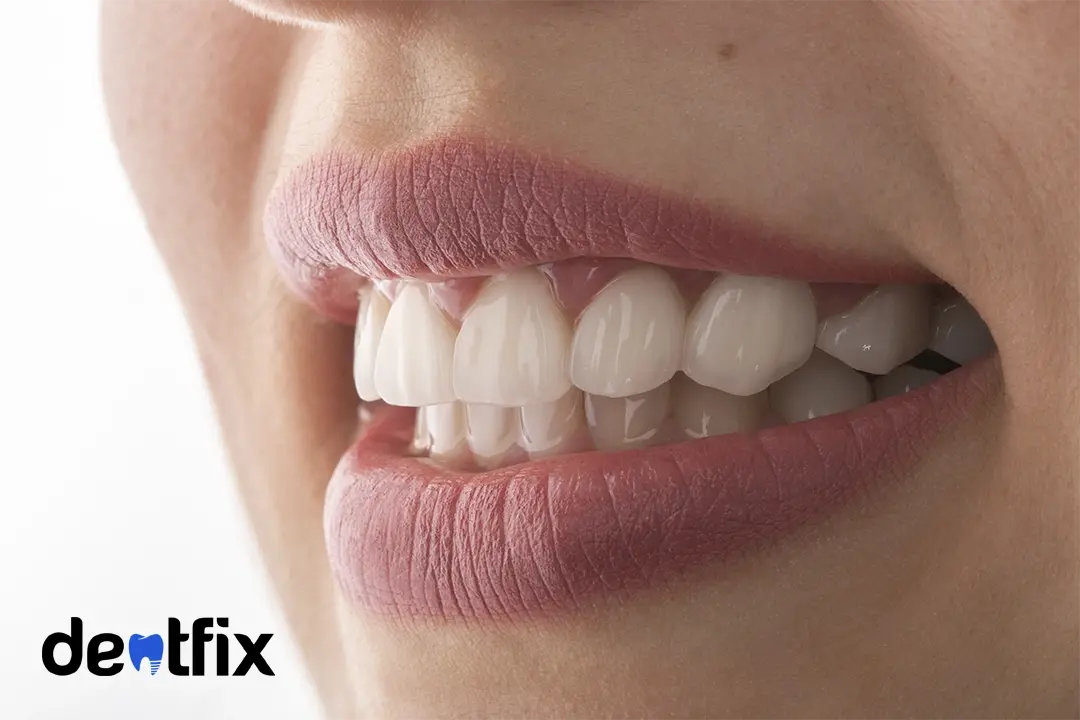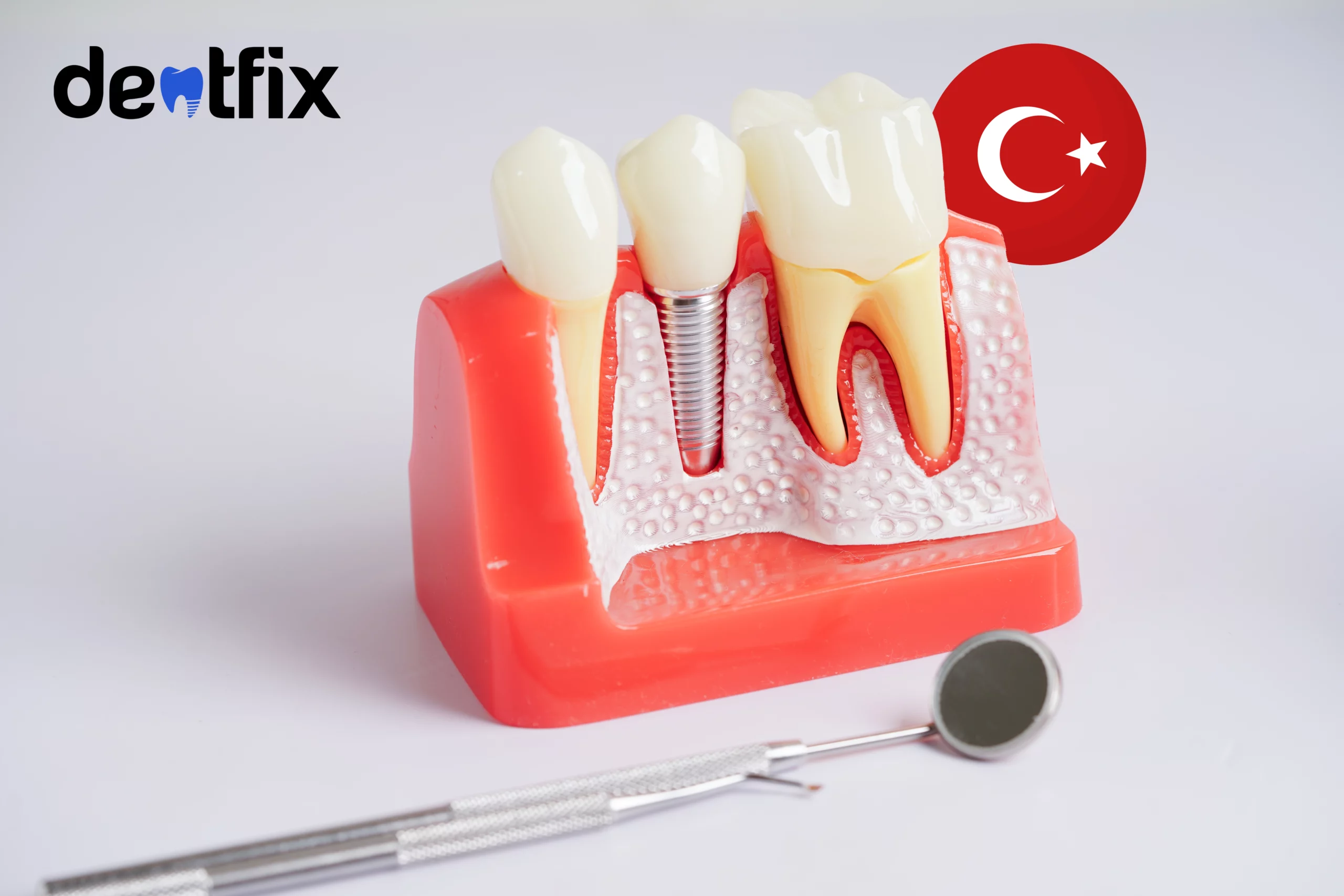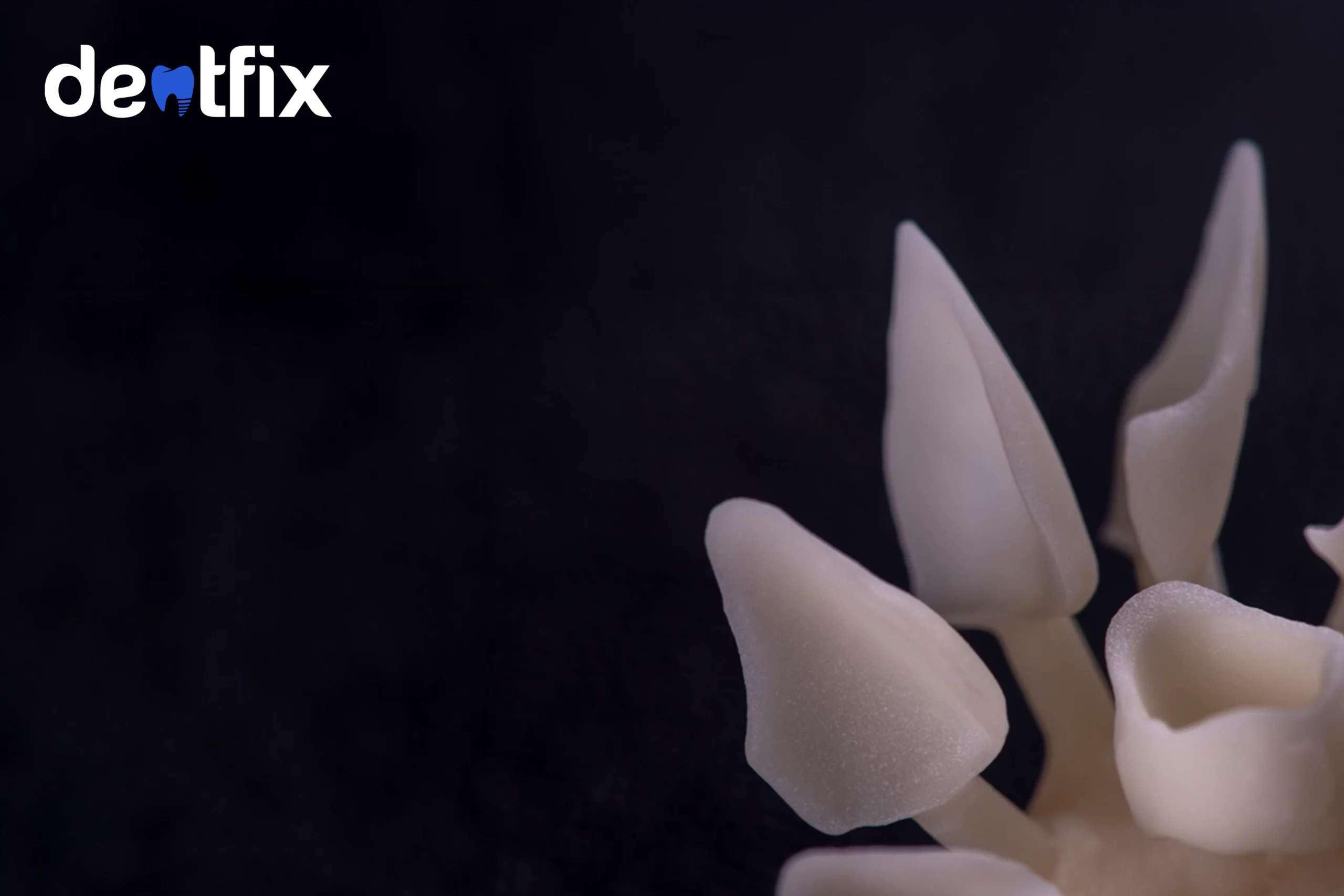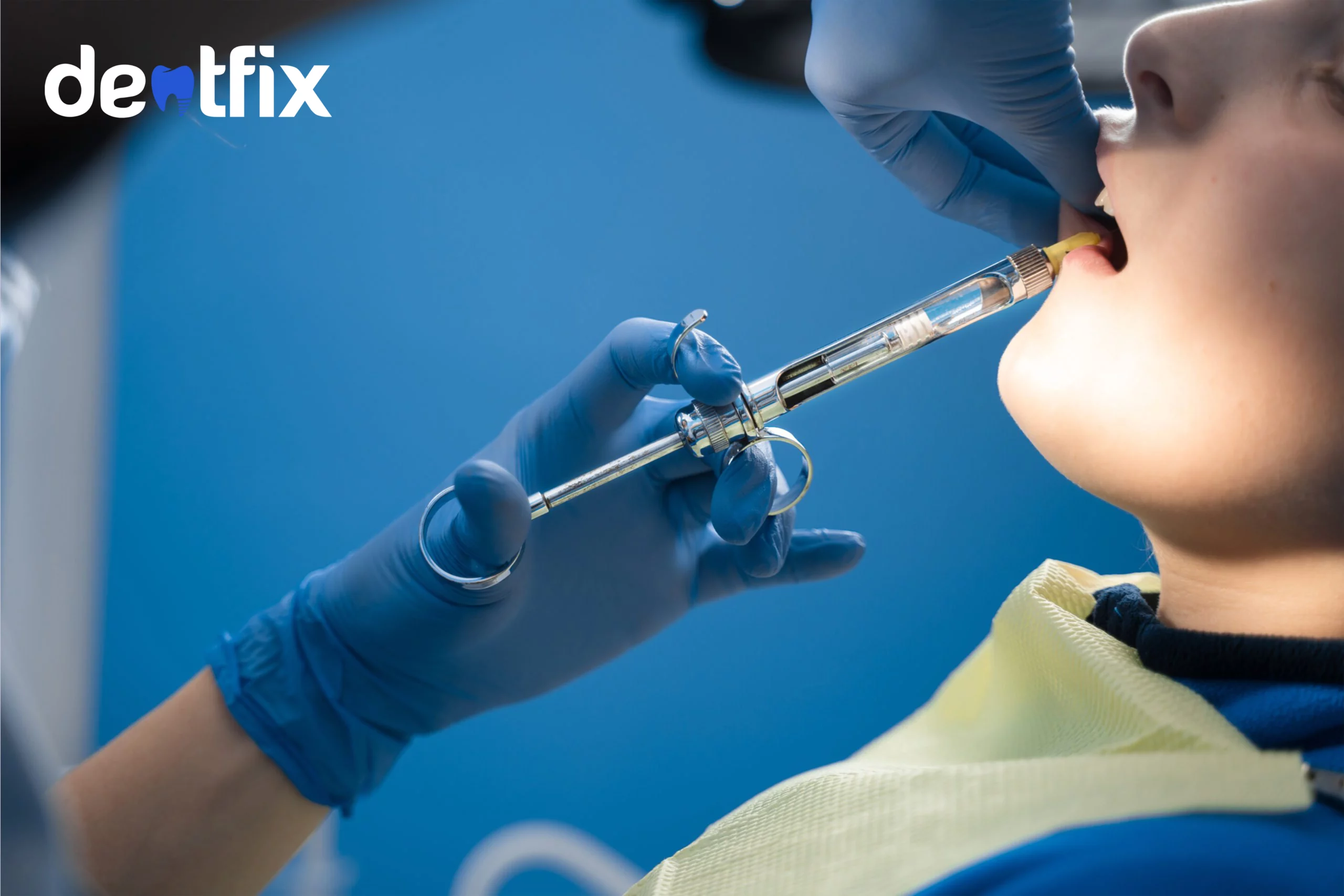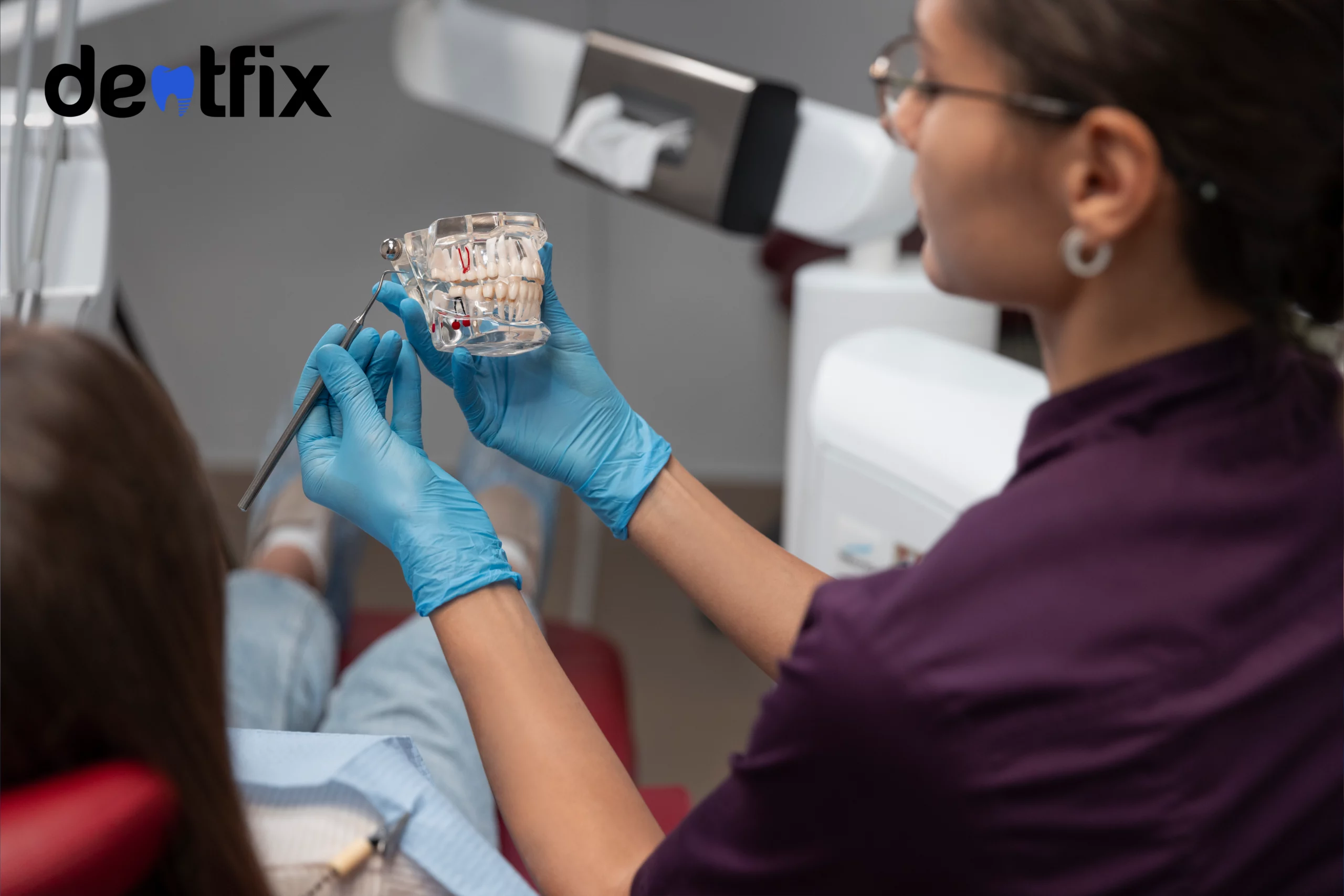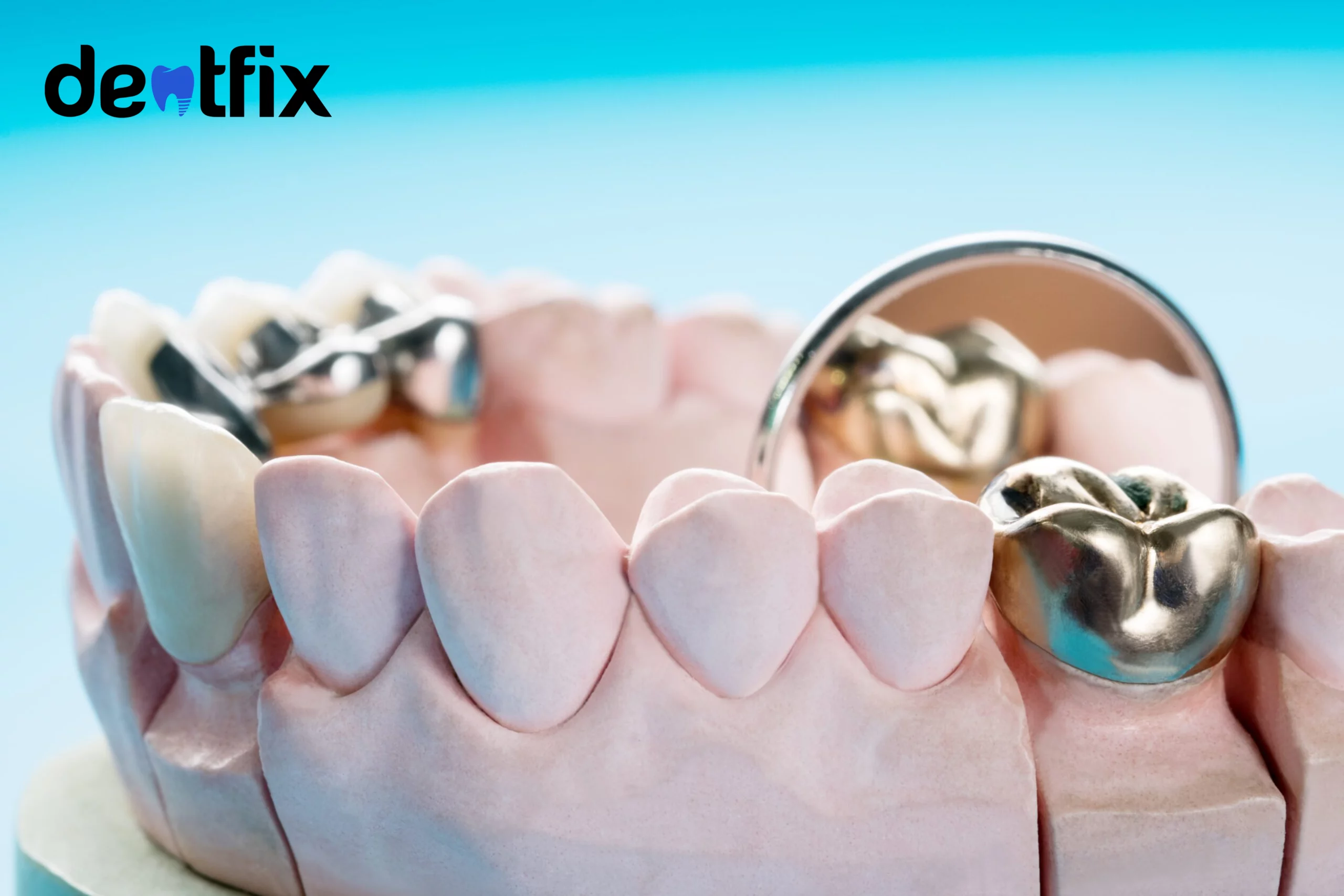Chapter 4: Dental crown problem
After we thoroughly discussed what dental crowns are, with types and procedures, in the previous chapter of the guide, it’s now time for the annoying part. Yes, a list of every dental crown problem, common and uncommon. This chapter of the guide is not meant to scare you. It is meant to keep you informed of what may happen. Also, and probably most importantly, should help you understand if you’re going through something and how to recognize it. At the end of this chapter, you’ll learn possible dental crown side effects and how to be aware of them, avoid them, and solve them.
Can you have a dental crown problem after the procedure? Like in any other procedure, dental or not, a dental crown problem may occur after you get dental crowns. Varying from pain to sensitivity, from discomfort to fractures most people don’t know most of the time a dental crown problem is very easy to solve. Sometimes, a dental crown problem happens because of an inaccurate shaping of the natural tooth or while making the mold. Other problems come from insufficient dental hygiene. Dental crowns need careful protection, and their problems are not impossible to solve. If you take care of your teeth and crowns, you can prevent many of them.
In this article, we will discuss the most popular dental crowns problem. Also, we’ll discuss how to recognize, avoid or solve them.
Every type of dental crown problem
Most of the time a dental crown problem is easy to avoid. Of course, you know how to take care of your teeth and what to look for. So, part of minimizing the possibility of the problems associated with dental crowns is on you. For instance, if you take good care of your dental hygiene and stay away from hard food, especially right after the crown process, there’s a high chance you won’t face difficulties such as sensitivity, pain, fractures, and a decayed tooth.
On the other hand, a major part of the effectiveness of your dental crowns depends on the proficiency of your dentist and their laboratory. If they do not accurately measure the shaped tooth or forget to perform a root canal, you might face pain, infection, and a loose crown that will lead to the decay of your natural tooth.
Here’s the list of every dental crown problem you need to know about:
- Tooth decay under the crown
- Loose dental crown
- Dental crown sensitivity or discomfort
- Pain after dental crown
- Fractures
- Dental crown infection
We will now go through all these problems and help you understand them, solve them and avoid them.
Tooth decay under the crown
Having a crown perfectly fitting your tooth needs an expert dentist alongside a competent dental lab. Even the smallest gap between your tooth and the crown may lead to tooth decay. The gap acts as a junction or cavity in your mouth, which is the best condition for bacteria to grow. If gone untreated, your teeth can get severe decay, and even turn your teeth black under your crown.
Bad oral hygiene adds up to the severity of the whole situation, so you might encounter pain or unpleasant conditions. Remember, prevention is always better than treatment. So please follow the advice of your dentist carefully.
As soon as you notice a gap between your crown and tooth, what can you do? Please get in touch with your dentist before it gets worse.
If the decay occurs in an area covered by the crown, your dentist should take the crown off, remove the decay and place a new cap on your tooth. If there’s no breakage, the dentist will insert the same crown again.
Loose dental crown
Sometimes even if there’s no problem with the crowns, they can become loose over time. There are two main reasons for this scenario. Either the dental cement lost its effectiveness or you are experiencing jaw disease.
So, what if you’re having a loose crown because of a lack of stickiness? You can easily visit your dentist and they can fix it by adding more cement. But the case of jaw disease is more difficult.
If it’s a bone problem, you might need a bone graft so that the implant will be surrounded by healthy bone.
Diabetes and some medical conditions affect your bone, causing them to deteriorate. So immediate loading implants are not recommended and you should wait 3 to 5 months after the implant has been screwed into your jaw so that the bone can grow around it and hold it in place properly.
Dental crown sensitivity and discomfort
To understand dental crown sensitivity we need to talk about the outer layer of the tooth called enamel. While reshaping your tooth, there’s a chance your dentists will remove the whole enamel layer, leaving the dentin layer – the part under the enamel – uncovered. The dentin part of your tooth is sensitive to heat and cold. For this reason, it’s better to choose a professional dentist with good experience so that you’re sure they know how to perfectly place the crown.
If the crown covers your tooth, leaving no space for any materials to reach your tooth, you won’t feel a thing while consuming hot or cold food. However, if it doesn’t sit well, the dental crown process would lead to sensitivity and feelings of discomfort.
In case of sensitivity, contact your dentist to solve the problem easily and quickly.
Fractures
Sometimes, because of either trauma or excessive force, crowns are liable to break. This can easily be fixed at your local dentist. Depending on severity may take one or two visits.
To increase the survival rate of your crown, you should be careful with what you eat and should not use your crowns to open any hard objects, like bottle caps or pistachios.
Dental crown infection
What the root canal does is basically kill the nerves underneath your tooth. Root canal treatment is required for teeth to protect them before placing the crown on top. If we make a crown without root canal treatment, the tooth will not survive. Also, if there’s a traumatized nerve, the crown might press it and the result will be an infection. This is not the only reason for infection after getting a dental crown. If you’ve got old fillings, they cause infection leakage to the nerves.
Whatever the reason, if you notice the symptoms of infection you need to contact your dentist immediately so he can take care of it and cure it.
How to know you have an infected dental crown?
In order to cure an infection caused by dental crowns, first, notice the infection and then visit your dentist as soon as possible. There are some signs of a tooth crown infection that you should watch out for and be alarmed as soon as they appear.
- Unusual redness around the crown
- Pain in that area
- Feeling of heat in just one part of your mouth, not after drinking or eating hot food
- Unusual fluid, mostly green or yellow, around the crown
- Stinky breath or unpleasant smell around the crown
- Gum infection, usually seen as swelling of your gums or jawbones
Pain after a dental crown can be an uncomfortable feeling yet it’s not uncommon. Many people experience this problem and worry about what may have happened or how long will it last. Reasons for consistent pain after getting a dental crown are many. They include just an adjusting period, active infections or cavities under the tooth, bruxism, the recession of gums, etc.
What are the reasons for pain after dental crown?
Pain after a dental crown may be a temporary problem but it may also hide some problems. Dental Crowns are used when a tooth has extensive damage. The teeth need a protective cap to protect them from further damage. They also help restore the size and shape of the tooth so that it can function well with the rest of your teeth. While a permanent crown is meant to give you relief from future dental problems caused by tooth decay, fractures, or teeth misalignment, it can sometimes worsen an already bad situation. If you have been experiencing throbbing pain after a dental implant crown procedure you need to get in touch with the doctor.
There may be a variety of reasons for pain after a dental crown:
- Adjustment period
- Infection or large cavity under the crown
- Teeth clenching or grinding
- Recession of the gums or gingival recession
- The crown doesn’t fit perfectly
Now, let’s analyze these possible dental crown problem one by one.
Adjustment period
Dental crowns take some time to adjust to your original bite. This is whether your doctor placed a permanent crown or a temporary crown. As a result, mild to severe pain or irritation is expected. We normally refer to this period as the “adjustment period”.
It can take up to two weeks for you to feel your upper jaw align completely with the lower jaw. Therefore, it is completely normal if your bite feels different and hurts when you chew your food. If the pain continues, and you feel like your bite is still off after a crown, it’s important for your crown to be reassessed by a dentist. This is because there may be other factors that should be taken into consideration.
Infection or large cavity under the crown
If you went through a dental crown procedure recently and are experiencing persistent pain, there is maybe something going on underneath the tooth that you are not aware of.
A very common procedure called root canal treatment is performed usually before the crowns. Specifically, it’s performed if the infection or cavity has progressed into the nerves and surrounding gum tissues of the tooth.
In simple words, a root canal procedure is performed to save your entire tooth from extraction. This is because it could have harsh long-term effects on your otherwise healthy teeth.
If a dental crown is placed on your tooth without a root canal you may have pain. There is a high probability that there is a traumatized nerve under it and the root has been infected. There are various reasons why that happens including bacterial plaque buildup, fracture or leakage from old fillings etc.
You may experience inflammation around the tooth, bleeding gums, or throbbing pain if there is an active infection under the crown. If you are facing any one or all of these symptoms, visit your dentist for a checkup, so they can assess and treat you according to what is needed for pain relief and treatment.
Teeth clenching or grinding
Susceptibility to pain after a dental crown procedure is much higher if you have the habit of grinding your teeth or clenching your jaw when you sleep at night. The medical name for this habit is ‘Bruxism’ and its severity varies from person to person.
This condition is usually stress-induced although in many rare cases, it may also occur as a side effect of certain medicines. Habitual teeth grinding can result in a fractured or chipped tooth, myofascial pain, damaged enamel exposing the deeper layers of the tooth, and sensitive teeth.
Your dentist may be able to best identify if you have bruxism and suggest treatment accordingly.
The recession of the gums or gingival recession
Post-procedure soreness or inflammation in the gums surrounding your tooth is normal if it lasts for a few days but if it persists for more than a week, it is advisable to see your dentist and find out what’s wrong. Infected nerves or a weak tooth can also cause your teeth to recede.
One possible reason could be that your gums have recessed or simply put, the gum tissue has been compromised which exposes the tooth roots and many other dental problems including cold sensitivity, discolored teeth, and of course cavities.
The crown doesn’t fit perfectly
The fitting of your crown is a really important aspect and usually, dentists take a day just to take the measurements for the crown and to send them to the lab. However, if there is even a slight misalignment, chances are that you may have trouble chewing and it may cause pain in your jaw.
You are meant to take special care immediately after crown placements especially when it comes to food. Try not to have chewy foods or cold foods, as they may cause pain and irritation.
If you feel your upper teeth and lower teeth don’t align well and the disparity is causing pain, your dentist can decide if the crown needs to be replaced. Additionally, the blank spaces between the teeth are breeding grounds for bacteria and plaque. So make sure your crown fits well when you bite down and there are no irregularities.
If the crown doesn’t fully cover the damaged or decayed tooth, the innermost layer of the enamel called dentin is exposed. It increases the sensitivity of your teeth to cold and hot temperatures. Therefore, it is really important to assess how the crown feels when you bite and reach out to your dentist if it is constantly causing you pain.
Throbbing pain after dental implant crown
Dental implants are ideal for people who lose their original tooth due to an infected dental filling or because of a traumatic injury. After this procedure, sometimes a dental crown is placed to protect the abutment and to keep the inner tooth area and its blood vessels from bacteria or cavities.
Throbbing pain after a dental implant crown may occur for several reasons. One of the most common reasons is peri‐implantitis, an infection that affects the bone surrounding the dental implant. We can consider it to be a gum disease that slowly starts to invade the bone. It can result from excess crown cementation on the abutment that begins to infect the gums and bone.
Among other reasons is the fitting of your crown. If the crown doesn’t fit you right, it can cause a bad bite and you will eventually be exposed to cavities. If that is the case, the pain after is an indicator that you must see your dentist, who can reassess your crown and fix it as per the correct measurements.
How to handle pain after dental crown procedure
As we explained before, you can go through just a simple adjustment period or something else may be going on. If you feel like the pain is not stopping after 3-4 days, you should get in touch with your dentist. The dentist is the first point of contact if your tooth pain is unbearable after your dental procedures. If there’s mild pain in the first few days, you can try one of these home pain management tips and tricks.
Let us remind you that natural remedies for pain after a dental crown are just extra help. They won’t and can’t substitute painkillers and your doctor.
Salt water gargles
It is a traditional and most effective home remedy that you can use if you have increased sensitivity to hot and cold temperatures after you get a dental crown. Just put half a teaspoon of salt in a glass of water, give it a swirl, and gargle at least 10 times.
Warm salt water rinse kills the bacteria and helps a lot with inflamed gums due to crown toothaches. Also, make sure to adopt regular oral hygiene practices in order to protect your teeth from cavities and other dental issues.
Cloves
Used in toothpaste and many herbal medicines, cloves are well known for their healing properties when it comes to dental health. The active ingredient in cloves called Eugenol contains anti-inflammatory properties that help reduce pain and act against bacteria. You can chew 2 to 3 cloves or use pure clove oil to bring down any kind of irritation or inflammation in your teeth after you get a dental crown.
Turmeric powder
Turmeric is known for its anti-inflammatory nature and it is used for many ailments. It happens to be one of the best ones you can use in case of a toothache emergency at home. Dilute half a teaspoon of turmeric in water and apply it to the affected area. You can alternate water with honey also if the taste bothers you too much. This mixture can help provide relief from aching gums and nerve pain.
Ice pack
A well-known and most-used method of providing instant relief from pain is cold compression. Just take a few ice blocks from the freezer, put them in a soft cotton cloth and ice the affected area. Doing this repeatedly for at least 2 times a day for no longer than 15 mins will help alleviate the throbbing pain. For pain caused by nerve root infection or gum infection, this is an effective and inexpensive method of pain relief but not a solution to the cause.
Over-the-counter medications for pain after dental crown
Although we would recommend you to seek help from your dentist before you take any medicines, in case of an emergency counter ibuprofen or paracetamol can work in providing relief from the nagging pain following a dental crown procedure.
All these solutions should be cleared with your doctor and dentist and should never substitute a dentist appointment to find the cause of your problem and a solution.
References:
-Shafigh, Elnaz, and Mehran Ashrafi. “Hypo and hyperbaric pressure effect on the fracture resistance of three types of dental crowns: PFM, LD, and Y-TZP.” Journal of oral biosciences vol. 64,2 (2022): 245-252. doi:10.1016/j.job.2022.04.003
